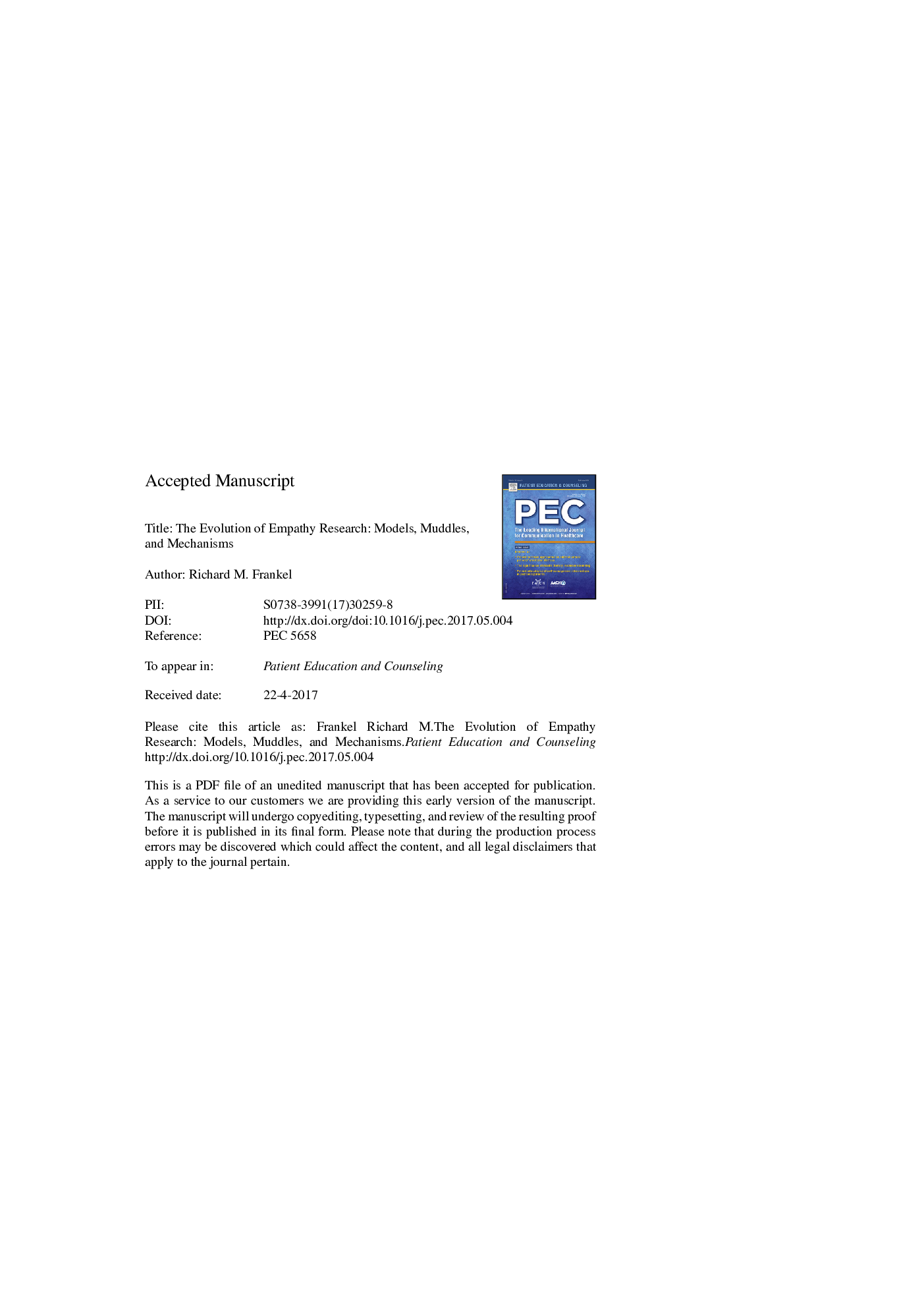| کد مقاله | کد نشریه | سال انتشار | مقاله انگلیسی | نسخه تمام متن |
|---|---|---|---|---|
| 5681875 | 1645272 | 2017 | 8 صفحه PDF | دانلود رایگان |
عنوان انگلیسی مقاله ISI
The evolution of empathy research: Models, muddles, and mechanisms
ترجمه فارسی عنوان
تحول پژوهش همدردی: مدل ها، اختلالات و مکانیزم
دانلود مقاله + سفارش ترجمه
دانلود مقاله ISI انگلیسی
رایگان برای ایرانیان
موضوعات مرتبط
علوم پزشکی و سلامت
پزشکی و دندانپزشکی
پزشکی و دندانپزشکی (عمومی)
چکیده انگلیسی
The word empathy enters the English language in 1909, translated incompletely from German by a British-born psychologist interested in introspection. In the ensuing 100+ years, the term has been defined in a range of different ways by researchers and scholars. The biopsychosocial framework developed by George Engel comes closest to capturing empathy as a biological, psychological and social phenomenon. In this paper, I explore the psychological and social/communicative dimensions of empathy. Psychologists ask the question, How does the capacity for empathy vary across individuals? By contrast, interaction scholars ask, How is empathy communicated from one person (a healthcare provider) to another (a sufferer)? A communication focus involves the accuracy and impact of empathic communication as evidenced in a sufferer's response. The two views of empathy, as a quality or capacity or as co-created in interaction, are contradictory, and are a source of confusion and contentiousness in the research literature. As in theoretical physics, where an as yet unresolved 80Â year controversy has marked the debate about whether light is a particle or wave, research on empathy will likely remain paradoxical, unresolved and a source of creativity and innovation in the science and art of human caring.
ناشر
Database: Elsevier - ScienceDirect (ساینس دایرکت)
Journal: Patient Education and Counseling - Volume 100, Issue 11, November 2017, Pages 2128-2130
Journal: Patient Education and Counseling - Volume 100, Issue 11, November 2017, Pages 2128-2130
نویسندگان
Richard M. Frankel,
